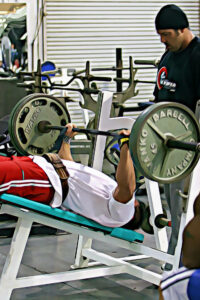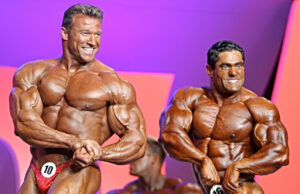The Strength Sensei on Chest Training
Approaching pec training from the right angles
Ask any bodybuilder how to train the upper chest, and the most common answer is WWAD, which translates into “What Would Arnold Do?” This would, of course, lead to consulting Arnold’s classic textbook, The New Encyclopedia of Modern Bodybuilding.
“I believe in including Incline Presses in your program right from the beginning so that you don’t find your upper pecs are underdeveloped relative to the middle and lower portions of your chest,” says Arnold. “Also, doing a lot of Incline Presses will help you create that split between upper and lower chest that is so impressive in most-muscular poses.” OK, now let’s look at what Charles R. Poliquin would do.
The Strength Sensei said the pectoralis major is one muscle with two heads, clavicular and sternocostal, inserted on the humerus (upper arm bone). He said the clavicular head originates at the center portion of the collarbone (clavicle). In lay language, this area is referred to as the upper pecs, and one of its primary functions is to raise the arm. The sternocostal head originates at the costal cartilage of the first six ribs, and the adjoining section of the sternum (breastbone). In lay language, this area is called the lower pecs, and one of its primary functions is to lower the arm.
Citing a study using electromyography (EMG) to determine muscle activation, the Strength Sensei said researchers found the positions of the hands determine which portion of the pecs are emphasized during a bench press. The farther the hands are from the center of gravity, such as with the incline bench press, the more the upper portion of the pecs is emphasized. The closer the hands are to the center of gravity, such as with the decline press, the more the lower pecs are emphasized. However, neither exercise completely isolated these portions of the pecs.
 Varying the angle of the bench influences which area of the pectorals is emphasized. (Photos by Miloš Šarčev)
Varying the angle of the bench influences which area of the pectorals is emphasized. (Photos by Miloš Šarčev)
The Strength Sensei also found another EMG study examining the incline, decline, and flat barbell presses. It found that the maximum recruitment of the lower pecs was with a flat, not decline, press. The study also looked at hand spacing, and it found that a wider grip did not significantly increase the involvement of the lower pecs in flat bench presses. As for dumbbell flys, research has found that the dumbbell fly was less effective than the barbell bench press or the dumbbell bench press.
Arnold and other elite bodybuilders had an interesting insight about how to train, and they were right about many things. Scientific research, however, has enabled today’s bodybuilders to refine their training to an even higher level. (TSS)

